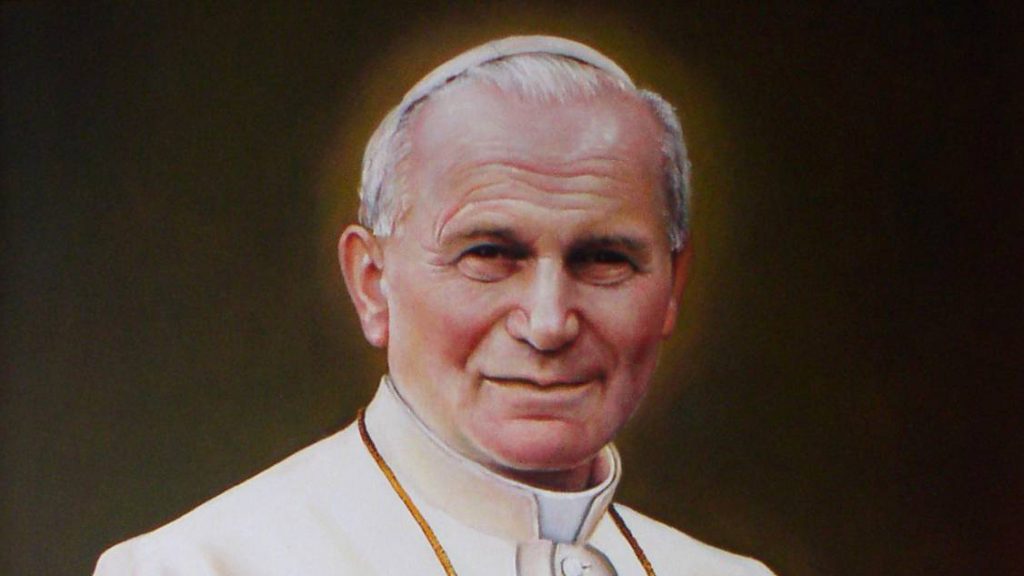His papacy began in October. His feast day falls in October. I can’t help but remember him every year when the leaves are falling in my part of the world.
St. Pope John Paul II embodied God’s fatherhood to a household of more than a billion men and women of different ethnic, cultural, and economic backgrounds. Because he was a father, he witnessed to the unity of all God’s family. And he spoke to that family in a language with universal appeal — the language of Scripture. As a Protestant, I was first drawn to him by the beautiful and brilliant way he wove the Bible into everything he did. As a Catholic, I loved him even more for the way he not only taught the faith, but lived it.
Pope John Paul took up the model of the Second Vatican Council, which itself had been profoundly shaped by the mid-20th-century “return to the sources” — the Catholic biblical, liturgical, and patristic movements.
Pope John Paul stepped out and proclaimed the biblical “Be not afraid,” the exhortation of prophets and angels — and God himself — uttered whenever history, whether personal or civilizational, had taken a momentous turn (see, for example, Genesis 46:3, Luke 2:10, Acts 18:9). And he confirmed his pervasively scriptural style in all of his early documents. In his first encyclical, “Redemptor Hominis” (“Redeemer of Man”), in 1979, almost three-quarters of the 205 notes throughout the document are scriptural citations.
Everyone knows his “theology of the body” addresses, delivered 1979-1984, but few people recognize that they were sustained studies of selected texts from the Bible — both Old and New Testaments — employing all the best tools of ancient and modern Scripture scholarship.
As pope, he synthesized and proclaimed the teachings of Vatican II in the language of Vatican II, which is the language of Scripture. He took up the mantle of the council’s tributary movements — biblical, liturgical, and patristic — and interwove their work seamlessly in the biblical idiom. The language of the liturgy and the Fathers is, after all, the language of Scripture.
How fitting that he died exactly 40 years after the close of Vatican II. In biblical terms, 40 years is a generation. His papacy embodied Vatican II. He presented the fullness of faith to the world in the most understandable ways, and drew millions, including me, into the heart of the Church. The end of his papacy was the end of a generation.

